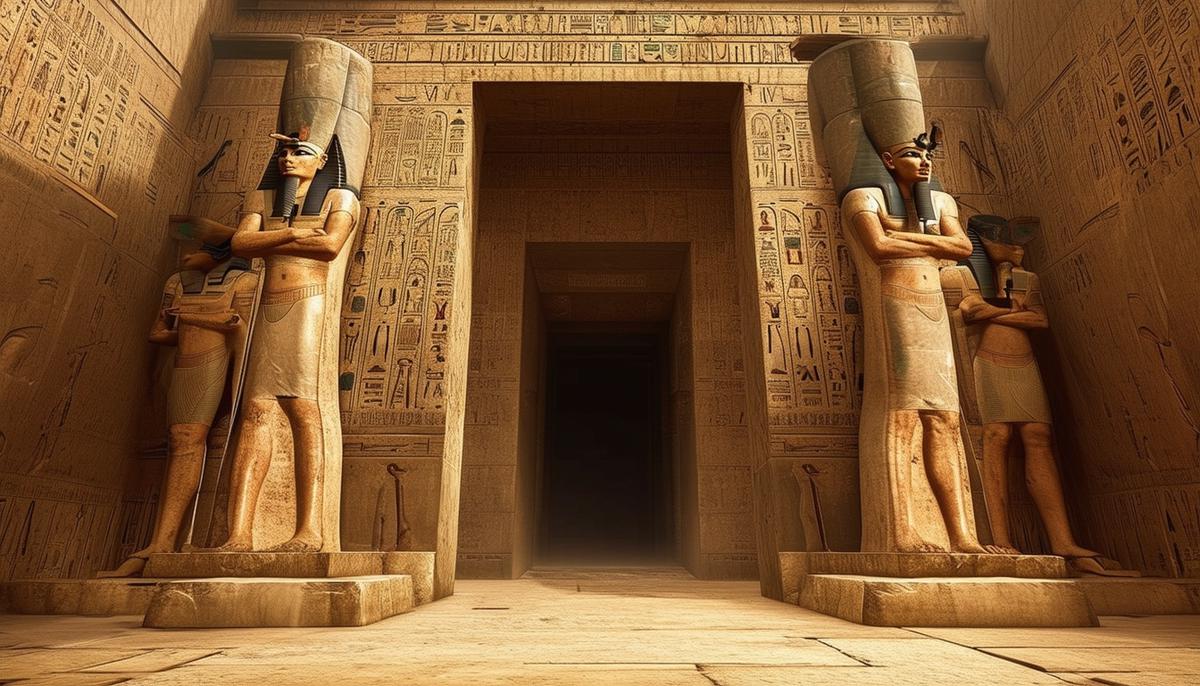Ancient Egyptian Tombs: Gateways to the Past
The sun sets over the Egyptian desert, casting long shadows on the sand. In the heart of this dry land lie ancient tombs, remnants of a great civilization. Imagine walking through the sand as an adventurous explorer searching for secrets of the past. The hot wind whispers old languages, reminding you that you're on special ground.
These tombs aren't simple holes. They're complex mazes carved with care, buried under layers of history. Look at the outside walls—huge structures standing guard against time. Carvings cover the walls, each telling a story. Strange symbols called hieroglyphs crisscross the surfaces in detailed patterns. Every inch hints at its age and mystery.
Step inside and feel the cool air. These tombs are sacred places where people once worshiped gods like Ra and Osiris. The walls come alive with colorful paintings showing scenes from long ago. Though faded, the colors still glow, telling tales of godly journeys and great battles. It's like stepping into an ancient storybook.
But it's not just the art that draws you in. Have you heard of King Tutankhamun? His tomb was full of treasures—golden chariots, beautiful jewelry, and his famous golden mask that still amazes people today. Sometimes, scarier than old pottery are the myths about these chambers. Unopened coffins make people wonder—could there be treasure inside, or a curse?
These tombs attract explorers like moths to a flame. They come with tools and dreams, ready to uncover the past's glory. Can you blame them? Stories of mummies walking the halls, guarding their sleep, are too exciting to ignore.
As you explore, tread lightly. You might feel like the spirits of long-gone pharaohs are watching you. Every echo of your steps, every touch of the ancient walls connects you to a history on the edge of forever. These tombs mix our world with whispers from the afterlife. Enjoy their glory and mystery, knowing you stand where gods and humans once met.
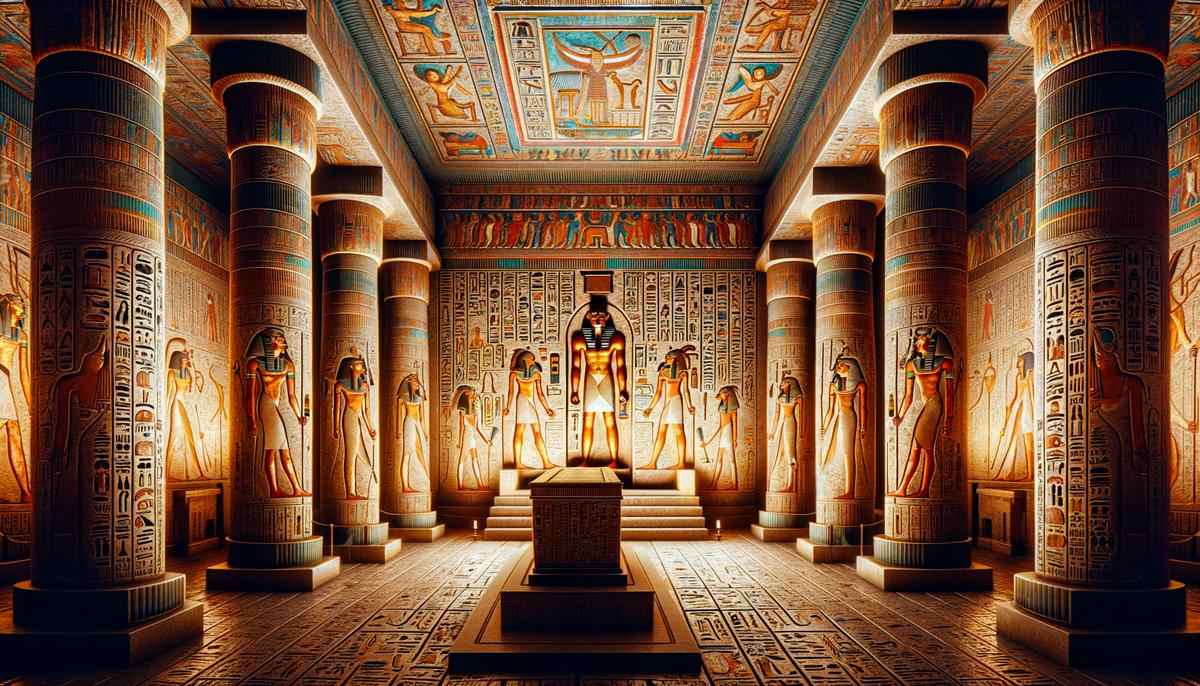
Tales of Discovery and the Supernatural
As explorers uncover ancient writings, stories of amazing discoveries emerge. Take Howard Carter's finding of Tutankhamun's tomb in 1922. Carter, driven by determination, revealed one of history's most talked-about finds.
As Carter's eyes adjusted to the candlelight in the forgotten room, Lord Carnarvon, his backer, asked,
"Do you see anything?"Carter's reply—
"Yes, wonderful things!"—barely described the awe inside.
The team found a warning:
"Death shall come on swift wings to him who disturbs the peace of the King."Some call this the 'Curse of the Pharaohs'. What happened next added to the legend. Months after the discovery, Lord Carnarvon died from a strange illness. The timing of a power outage in Cairo at his death fueled the chilling story.
Carter kept working, ignoring these scary events. Yet, over time, more people linked to the tomb's discovery died unexpectedly. Was it chance, or something ancient at work?
Other explorers had spooky experiences too. Amelia Edwards, a 19th-century writer, reportedly faced strange events after bringing artifacts back to England. Shadows moving at night and whispers that seemed to echo her thoughts haunted her.
Giovanni Battista Belzoni, who found the entrance to the second pyramid at Giza, also had odd encounters. Stories say he faced cryptic warnings and unexplainable events—from workers getting sick to objects moving on their own.
These tales leave a mark on history and make us question what's real. As you learn about these stories, remember that exploration involves more than just facts—it's woven with mystery, echoing through time like wind through an ancient tomb.
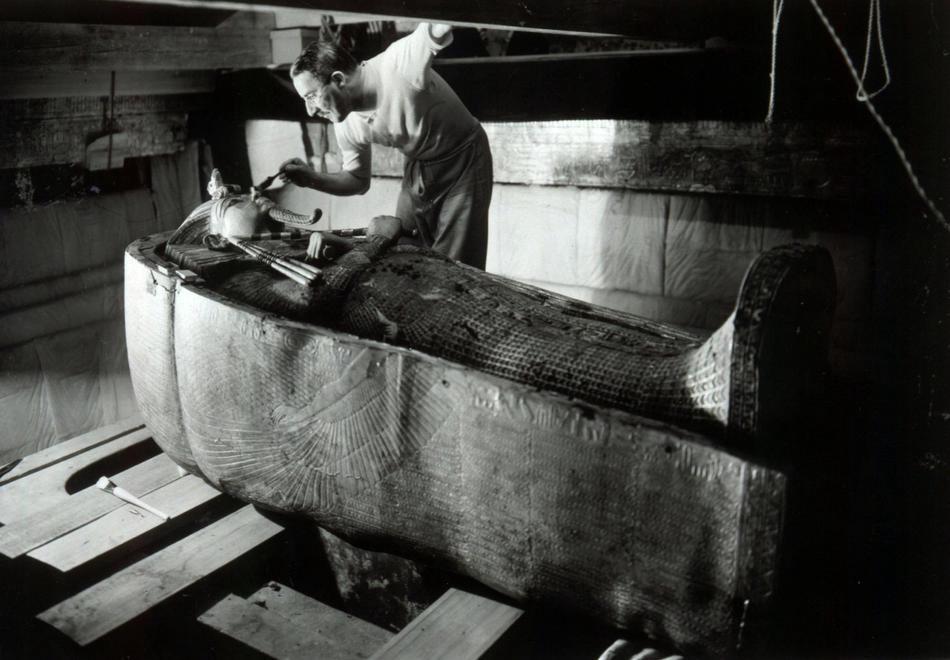
Legends of the Pharaohs' Curses
The deeper we look into ancient Egypt, the more we find scary tales of curses written in hieroglyphs. These aren't just stories; they're warnings meant to protect sacred tombs from greedy hands.
Hieroglyphs, the picture-writing of ancient Egyptians, were more than just for telling stories. They were powerful tools to scare people away. For example, the curse in Ankhmahor's tomb says:
"As for all men who shall enter this my tomb, there will be judgment… I shall seize his neck like a bird… I shall cast the fear of myself into him."
Imagine a tomb robber finding such a scary message!
Another famous curse is in Ptahhotep's tomb. It reads:
"He who shall make any change in this, my tomb, may Hapi consume him and spit him out, and may Sakhmet deal with him daily and hourly."
Using names of powerful gods like Hapi and Sakhmet made the curse even scarier.
Real-life events have added to these legends. Walter Bryan Emery, a famous explorer, faced terrifying things after ignoring an ancient curse. He got mysteriously sick and died suddenly after taking sacred objects from tombs.
Sir Armar Lowry-Corry explored Amenhotep II's tomb and faced many problems. His equipment broke, his team got sick, and he had nightmares about the pharaoh cursing him.
Even today, people working with Egyptian artifacts in museums report strange experiences—sudden power outages, weird lights, or phantom footsteps. It's like the pharaohs are still protecting their secrets.
As you learn about ancient Egypt and its eerie legends, remember the power these curses hold. They make lifeless stones feel alive with awe and authority, haunting those who disturb them through time. Each hieroglyph reminds us that the past is never truly gone; it waits, watching, ready to take back its secrets.
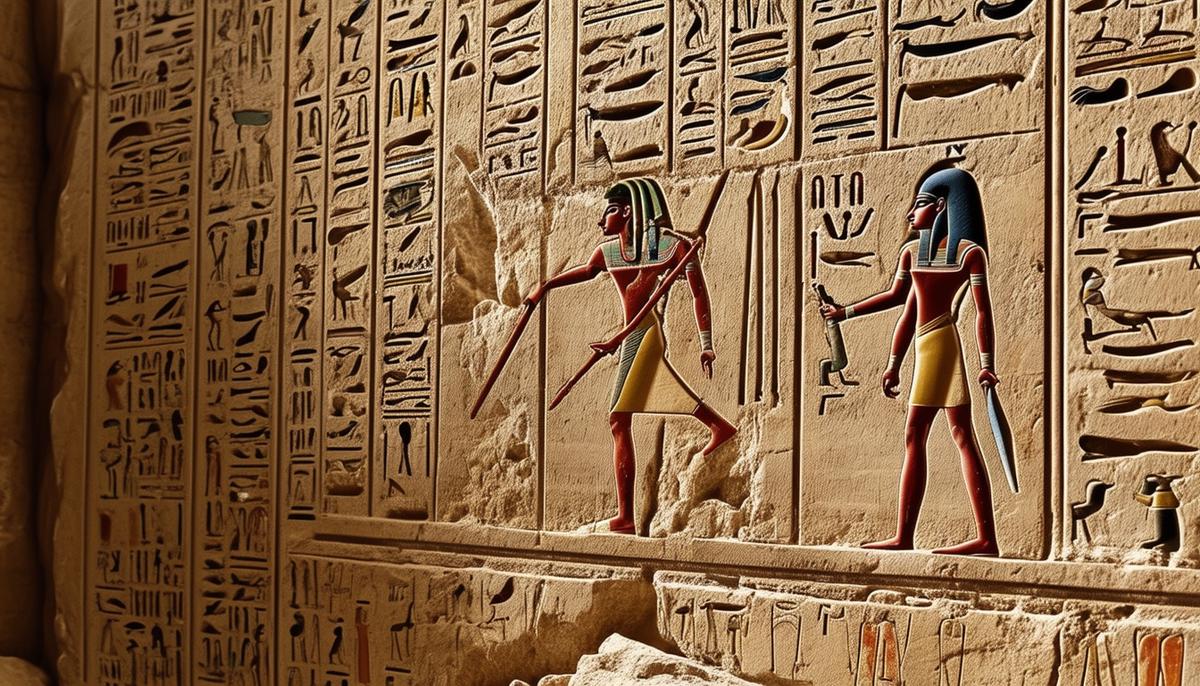
Modern Paranormal Investigations
Today, Egyptian tombs attract ghost hunters from around the world. These paranormal investigators use modern tools to search for evidence of otherworldly activity that earlier explorers might have missed.
Ghost hunters now bring equipment like:
- EMF meters to detect changes in electromagnetic fields
- Digital voice recorders to capture EVPs (unexplained voices or sounds)
- Night-vision cameras
- Thermal imaging devices to find cold spots
The Ghost Leap Team explored the tomb of Seti I, hoping to find proof of the supernatural. During their investigation, they recorded a faint whisper saying "Ra protect us" and caught a shadowy figure on camera.
Another group, Pharaoh's Whisper, used a spirit box in Queen Nefertari's tomb. They heard the word "Guardian" come through the device. The team also found cold spots where the Queen's coffin once lay.
Not all investigations are scary. At Meresankh III's tomb, Delia Cummings tried to use humor to connect with spirits. When she asked if they liked all the tourists, a voice replied through her spirit box:
"No rest"
While some people doubt these experiences, many believe the ancient tombs still hold secrets from beyond the grave.
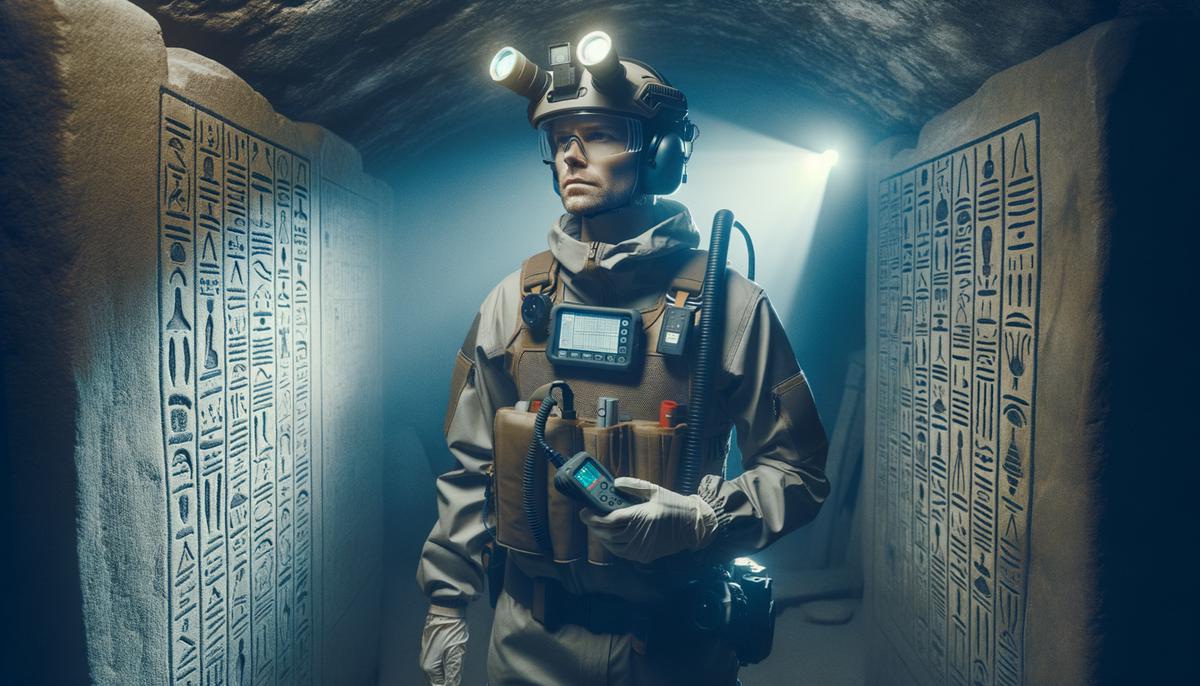
As an archaeologist, I've explored many ancient sites. But nothing prepared me for what happened in the tomb of Thutmose III. It started like any other night of research, but soon turned into something I'll never forget.
The tomb was dark and quiet as I walked deeper inside. Suddenly, the air turned ice cold. The hairs on my neck stood up, and I felt like someone was watching me.
My lantern began to flicker and then went out completely. As I fumbled for my backup light, I felt an icy touch on my shoulder. My heart raced as I finally got the new light working.
That's when I saw it – modern writing on the ancient wall that said:
"Leave now"
Before I could think, a ghostly figure appeared. It pointed at me and said "Begone" in a voice that seemed to come from everywhere.
Terrified, I ran out of the tomb as fast as I could. When I got outside, I tried to make sense of what happened. Was it real or just my imagination?
This experience changed how I view my work. Now I'm more careful when exploring ancient places, knowing there might be more to them than just history.
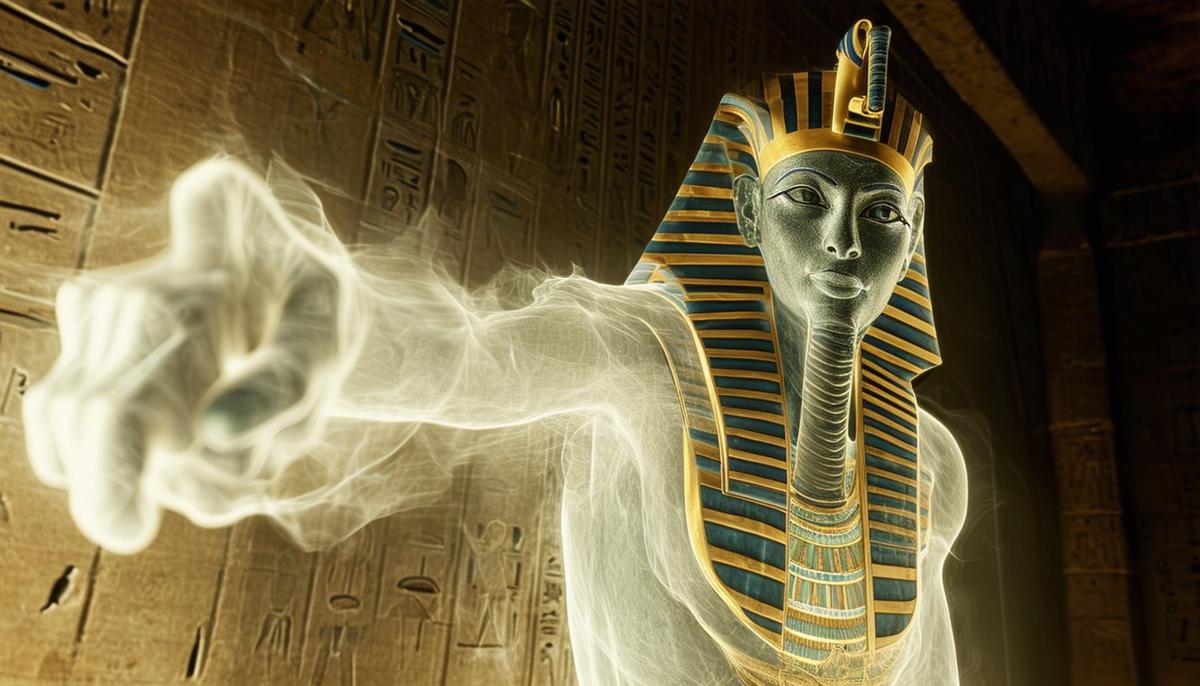
The Legacy of the Tombs
Ancient Egyptian tombs have left a lasting mark on our world. They've shaped how we see Egypt and sparked interest in both science and popular culture.
Tourism has grown because of these tombs. People visit places like the Valley of the Kings hoping to see where pharaohs were buried and maybe experience something supernatural.
Researchers keep studying these sites too. New technology helps them make fresh discoveries, but they're careful to respect the tombs and their cultural importance.
Movies, books, and TV shows often use Egyptian tombs in their stories. Think of films like "Indiana Jones" or "The Mummy". These keep people fascinated with Egypt's mysteries.
The internet has spread these stories even further. People share their ideas and experiences online, and virtual tours let anyone see inside famous tombs.
In the end, Egyptian tombs connect us to the past in a unique way. They remind us how much we still want to learn about life, death, and what might come after.
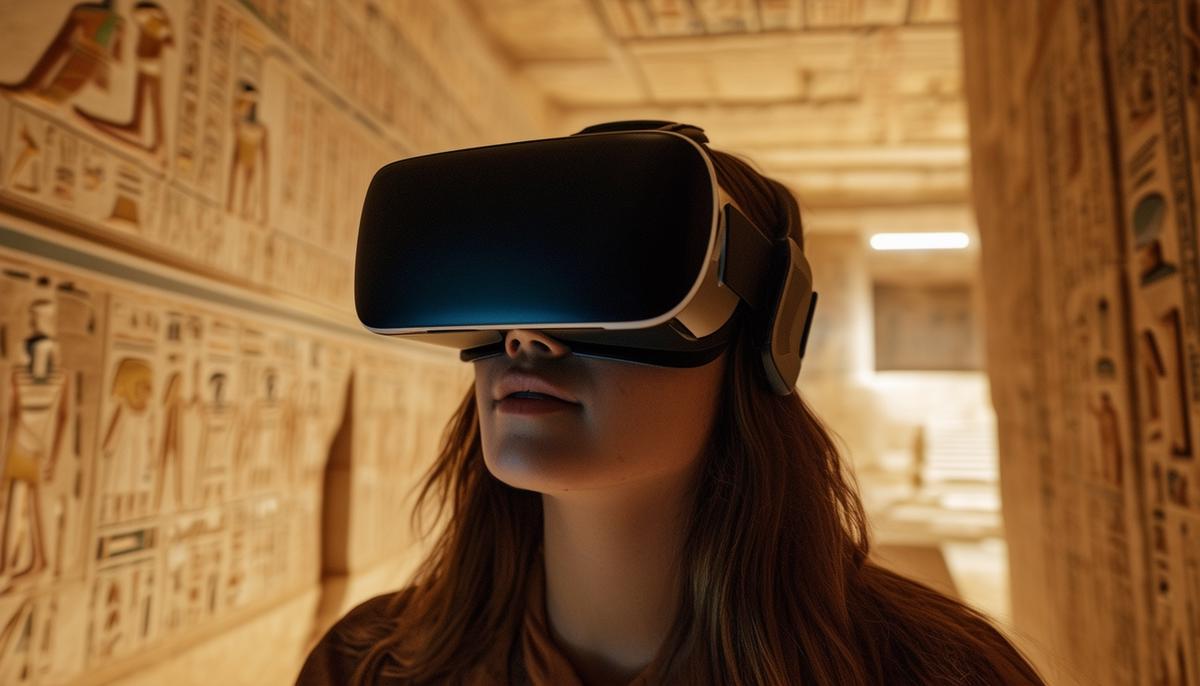
Conclusion and Reflection
Ancient Egyptian tombs are more than just old burial places; they're amazing storytellers. From King Tutankhamun's treasure-filled tomb to creepy stories about pharaohs' curses, these tombs mix history with mystery. They show us how an ancient society thought about life and death in ways that still grab our attention today.
Our journey through these sacred spaces reveals how the past and present are connected. The stories of Howard Carter and Lord Carnarvon remind us that curiosity can be risky. Modern ghost hunters show us that even with new technology, some secrets remain hidden.
"The impact of these tombs can be seen in books, movies, and everyday talks. Their tales, written in stone and passed down for generations, make us wonder if curses and ghosts are real or just made-up stories."
Even though we can now visit these ancient sites online, our fascination grows. We find ourselves drawn to the secrets of the tombs, feeling a strange connection to the past. This curiosity shows how much we want to understand the lives and beliefs of ancient people.
As you think about what we've learned, consider how these Egyptian stories make us question what we know about our world. The tombs remind us that the past is not just a memory but a living story that shapes our present. They invite us to explore, question, and wonder about the mysteries still hidden under the sand.
Whether you believe in curses or not, Egyptian tombs remain fascinating. They are doorways to a time where history and myth come together, inviting you to keep searching and never stop questioning the strange forces that connect our world with an ancient civilization.

